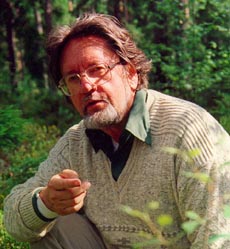Relevant biographical data on Anatol Pikas
The life of Anatol Pikas can be summarised as a road towards the Shared Concern method.
Start: combining psychotherapeutic training and cognitive psychologyIn the early 1960s Anatol Pikas wrote his doctoral theses Abstraction and Concept Formation at Uppsala University, Sweden and at the same time passed psychotherapeutic training. The thesis was published as a book by Harvard University Press, 1966. Anatol Pikas got an appointment as associate professor in Uppsala.
Years in peace education
1968 was the year of student revolution. Anatol Pikas was an interested outsider who became a peace educator. He participated in most international conferences in peace education in the 1970s where he, in vain, pleaded for the sentence that "Peace can be developed only in co-operation with the other side" and tried to organise East-West groups for Prepared Constructive Confrontation. Despite the fact that Anatol Pikas had appointments as Visiting Professor in peace education in the USA, Canada and West Germany he was still regarded as an outsider. His plea to develop interpersonal conflict resolution as a basis for international peace met with deaf ears in the lofty halls.
Tackling bullying as an expression of peace education
Anatol Pikas thought that as bullying was a spectacular interpersonal conflict, finding solutions to it could make a start for operationalised peace education . At first he tried to convert the bullies by trying to excite their sympathy for the victim using what he called the "Persuasive Coercion method". Later he developed his peace education to start with asking the bullies about their views about the conflict. It is that the bullies do not regard themselves as bullies but as the demonised "other side" in a conflict. Later he found that the bullies were, because of the noxious group dynamics, concerned of their own skin. The development of the Shared Concern method (SCm) had begun.
From treatment of actual cases to preventive methods
However, although SCm applied in tackling bullying is a method for treatment of actual cases, its preventive influence in a school is, only indirect. Where was the preventive method to break the vicious circle of violence? The educational market is, as we know, dominated by the preacher's paradigm. Teachers, like peace educators, believe in the possibility of conjuring up the good behaviour by admonitions or discussions in which the peaceful solution can win. Anatol Pikas tried like many others to introduce learning-by-doing by role-plays in constructive communication. The students playing conflict parties A and B were instructed to find and reinforce constructive elements in their antagonist's lines. However, when the players identified their roles as real, their constructive intentions were broken down.
The reason for breakdown was evidently that when the real enemy image was activated, the limbic system in the brain dominated over the cortex, the seat of all moral commands including peace education. The only way out was through a third party --- a mediator. So Anatol Pikas started a mediator education programme. Soon it was evident that a selection of mediators alienated them from the rest; they were inclined to play the role of judge. The resolution was to develop a program, All in the Class Become Mediators, ACBM.
ACBM is indicated in link Basics of the SCm that appears at www.pikas.se/SCm where you will find a link to the teacher instruction
http://pikas.se/ All_in_the class_Become_MediatorsACBM could become a universal tool in peace education because it has the capacity to improve the classroom climate. Suppose that more teachers make that discovery, the ACBM will spread naturally all over the world. The problem is, however, that ACBM including mediator-role-plays takes 2 x 90 minutes. But there is a natural place for it in language training if, in accordance with curriculum, it contains speaking performance. When Anatol Pikas himself gets the time in a language class, the effect is obvious. The problem is that language teachers are unaccustomed guiding the workshops in mediation. However, teachers who have passed SCm training in tackling bullying have with success applied ACBM in their classes.
The newest is on this Website
The article on "New Developments" that was published in 2002 in School Psychology International was actually sent to the Editor already in November 1999. The "newest development" is, however, expressed at this Web site you are reading now. You will find it at the end of the link Three performance levels resulting from training of SCm-users
